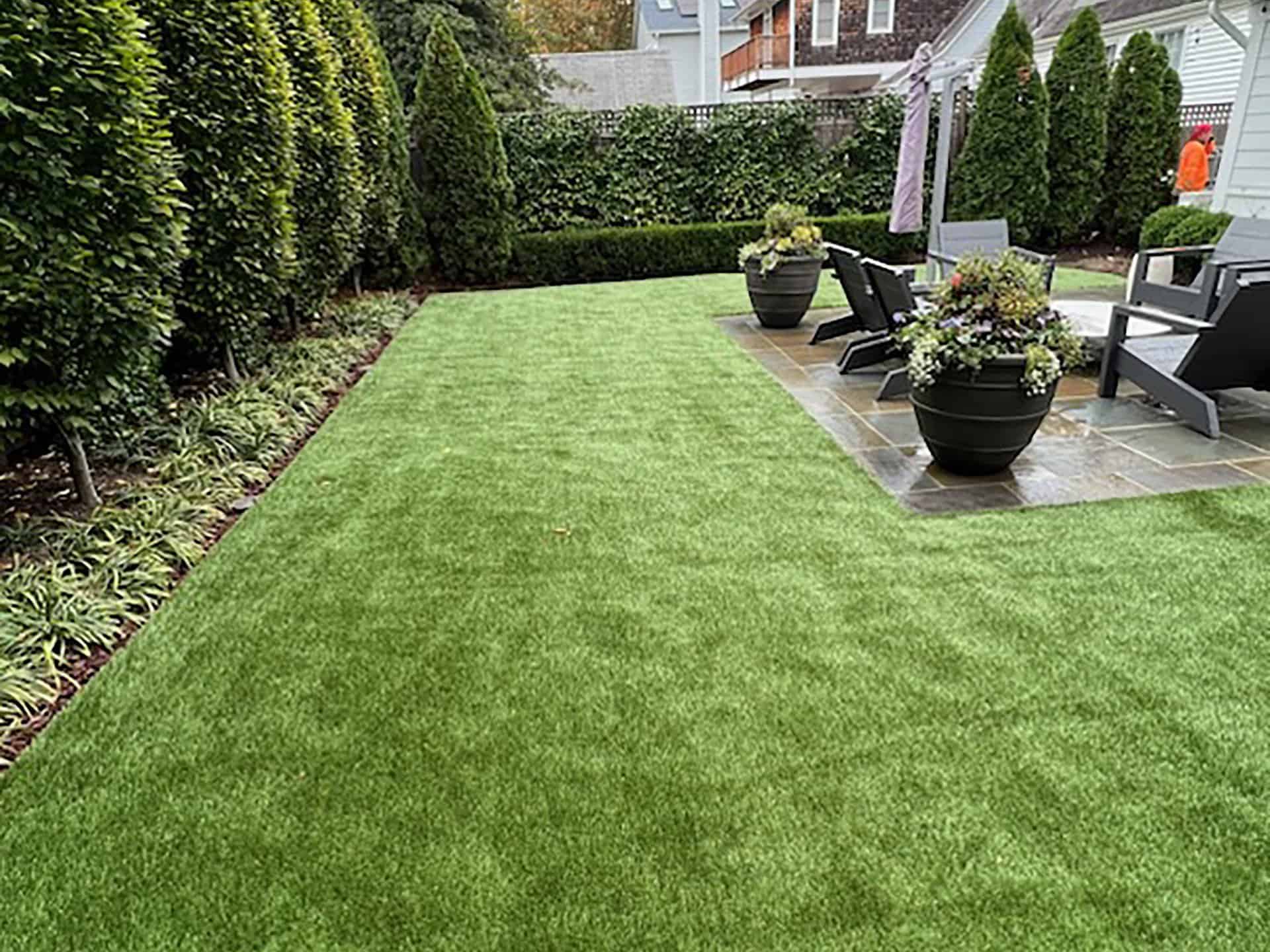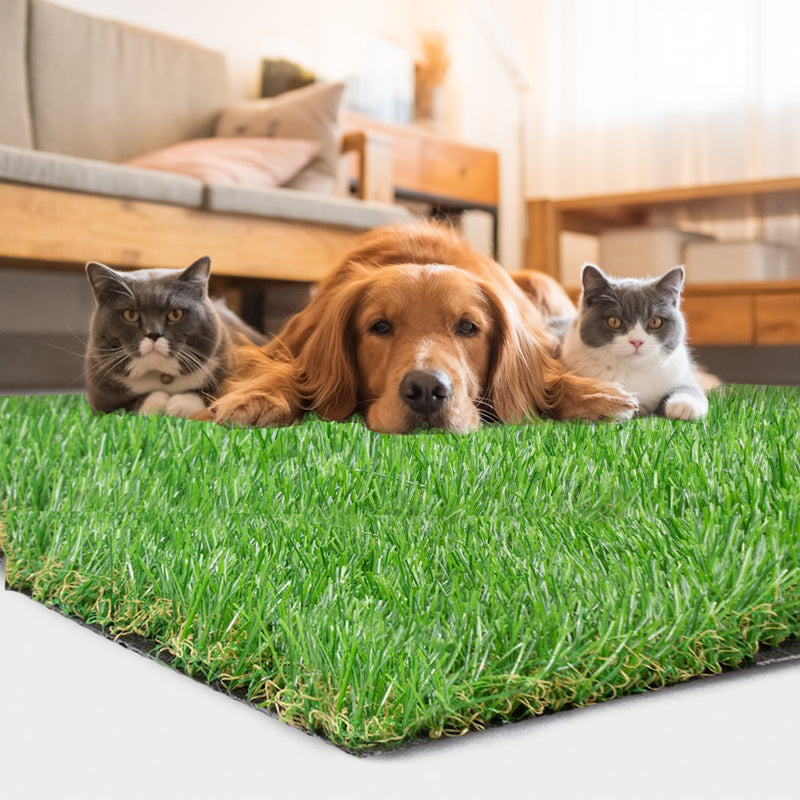Well-Known Phoenix Turf Companies Delivering Superior Synthetic Grass Installation
Well-Known Phoenix Turf Companies Delivering Superior Synthetic Grass Installation
Blog Article
Explore the Environmental Benefits of Opting for Artificial Turf Solutions
The adoption of man-made turf remedies provides an engaging possibility to deal with pressing ecological challenges. By dramatically decreasing water usage and decreasing the application of dangerous chemicals, these choices not only promote sustainable landscaping yet likewise safeguard neighborhood ecosystems.
Water Conservation Perks
Among the most considerable advantages of synthetic turf is its capacity to conserve water. Typical yard lawns require substantial irrigation, especially in locations susceptible to drought or water restrictions. In contrast, synthetic grass does not require watering, dramatically minimizing the total need for water resources. This feature is specifically helpful in deserts where water shortage is a pushing problem.
By eliminating the need for normal watering, synthetic grass adds to lasting landscape methods and aids alleviate the ecological impact of extreme water consumption. Moreover, the preservation of water includes the decrease of drainage, which can bring about soil erosion and river contamination.
Additionally, the setup of synthetic grass enables home owners and communities to allot water resources a lot more effectively, concentrating on crucial uses such as alcohol consumption water and agriculture. The shift in the direction of synthetic grass not only advertises accountable water usage yet additionally lines up with wider environmental objectives targeted at protecting natural resources.
As communities significantly prioritize sustainability, the water preservation advantages of synthetic grass present a compelling instance for its fostering in commercial and domestic landscaping projects.
Minimized Chemical Usage
The change to synthetic grass dramatically decreases the reliance on chemical therapies frequently utilized in natural turf upkeep. Standard lawn monitoring generally involves the application of fertilizers, chemicals, and herbicides to advertise growth and control bugs. These chemicals can present risks to human wellness, regional wild animals, and the atmosphere, contributing to dirt and water contamination.
In contrast, man-made lawn eliminates the need for these dangerous substances. By reducing the release of synthetic compounds right into the environment, artificial turf promotes much healthier dirt and water systems.
In addition, the lack of chemical overflow linked with synthetic grass installments aids protect local waterways from air pollution, sustaining water life and preserving biodiversity. Arizona turf. As neighborhoods progressively prioritize lasting techniques, choosing synthetic grass presents a practical solution that lines up with environmental conservation goals. Through this shift, home owners can appreciate lavish green spaces without compromising eco-friendly wellness, paving the method for a more lasting future
Lower Carbon Footprint

Additionally, the setup of fabricated turf can lead to significant water preservation. Natural yards call for substantial quantities of water for irrigation, which not only contributes to the carbon impact related to water removal and treatment however additionally pressures neighborhood water resources. In comparison, synthetic grass needs very little upkeep, needing no watering, consequently considerably minimizing water use and its connected energy costs.
Additionally, the longevity of synthetic grass contributes to its decreased carbon effect. With this website a life expectancy of approximately 15 years or even more, the requirement for regular replacements is decreased, leading to much less waste and lower power intake in production and dealing with typical grass choices. Generally, synthetic grass offers a sustainable option for eco mindful landscape design.
Environment Conservation
Environment conservation is a crucial consideration in the dispute over landscape design selections, particularly when contrasting artificial lawn to all-natural lawn. Natural turf yards usually call for extensive upkeep, including using pesticides, fertilizers, and herbicides, which can adversely influence local environments. These chemicals can seep into the soil and rivers, harming indigenous plants and fauna and disrupting regional environments.
In contrast, synthetic grass provides an opportunity to reduce the eco-friendly impact of landscape design. By going with synthetic lawn, property owners can minimize the disturbance of natural habitats connected with typical lawn care methods. Synthetic grass removes the requirement click here for more info for dangerous chemicals, consequently securing nearby wild animals and maintaining the integrity of bordering environments. The installment of fabricated lawn can lead to the conversion of former yard locations into even more biodiverse landscapes, such as pollinator gardens or native plant locations, which can support neighborhood wildlife.
Inevitably, the shift to man-made lawn not just saves water and decreases upkeep initiatives however also cultivates a more harmonious connection in between human activities and the natural surroundings, advertising habitat preservation at the same time.
Long-Term Sustainability
Long-term sustainability is a crucial consider assessing the benefits of synthetic grass over standard lawn lawns. Among the most considerable advantages of synthetic grass is its sturdiness; it can last as much as 15-20 years with minimal upkeep, whereas natural turf needs constant reseeding and replacement. This longevity lowers the demand for constant resources, such as water, fertilizers, and pesticides, which are crucial for preserving a healthy grass yard.
In addition, man-made grass contributes to a decrease in carbon discharges connected with grass care equipment. Standard grass often call for gas-powered mowers, leaners, and blowers, every one of which contribute to air pollution. Artificial turf companies phoenix. In comparison, artificial grass gets rid of the demand for such equipment, advertising a cleaner setting
Furthermore, the manufacturing of synthetic grass significantly uses recycled materials, improving its sustainability profile. As suppliers embrace eco-friendly methods, the ecological impact of synthetic grass remains to decrease.

Verdict
The fostering of synthetic grass solutions presents significant environmental advantages, consisting of go to this site substantial water conservation, minimized reliance on dangerous chemicals, and a reduced carbon impact. Additionally, synthetic grass help in maintaining all-natural environments by reducing land disturbance and promoting long-term sustainability through using long lasting materials. Jointly, these aspects emphasize the potential of synthetic grass to add positively to ecological health and offer a viable option to standard landscape design techniques in a significantly resource-conscious world.
In contrast, fabricated lawn does not need watering, significantly lowering the general need for water sources. By minimizing the release of artificial compounds into the environment, fabricated turf advertises healthier soil and water systems.
Additionally, the installation of fabricated lawn can result in significant water preservation. In contrast, man-made lawn needs minimal maintenance, calling for no watering, therefore substantially reducing water use and its linked power costs.

Report this page